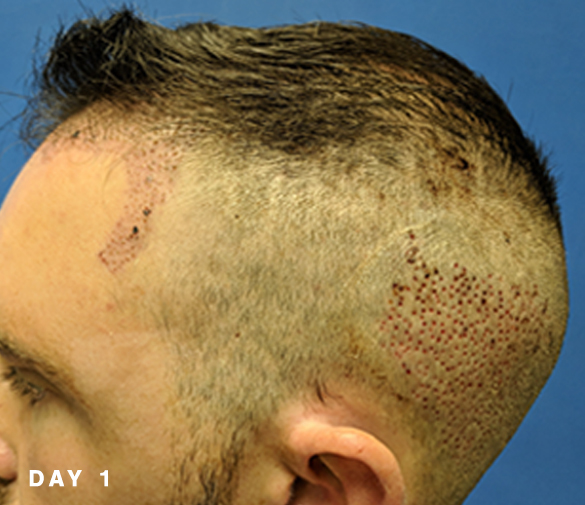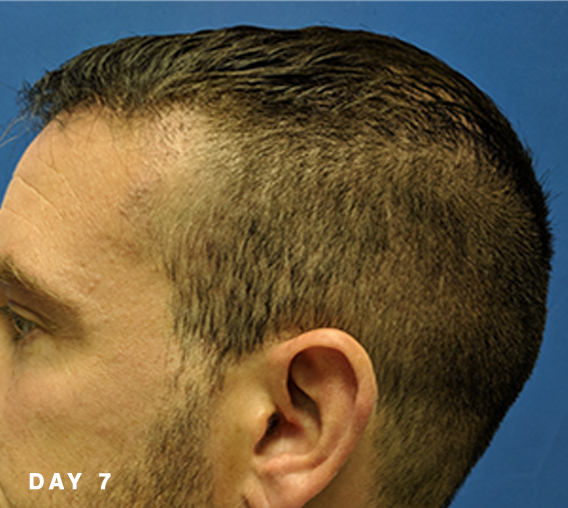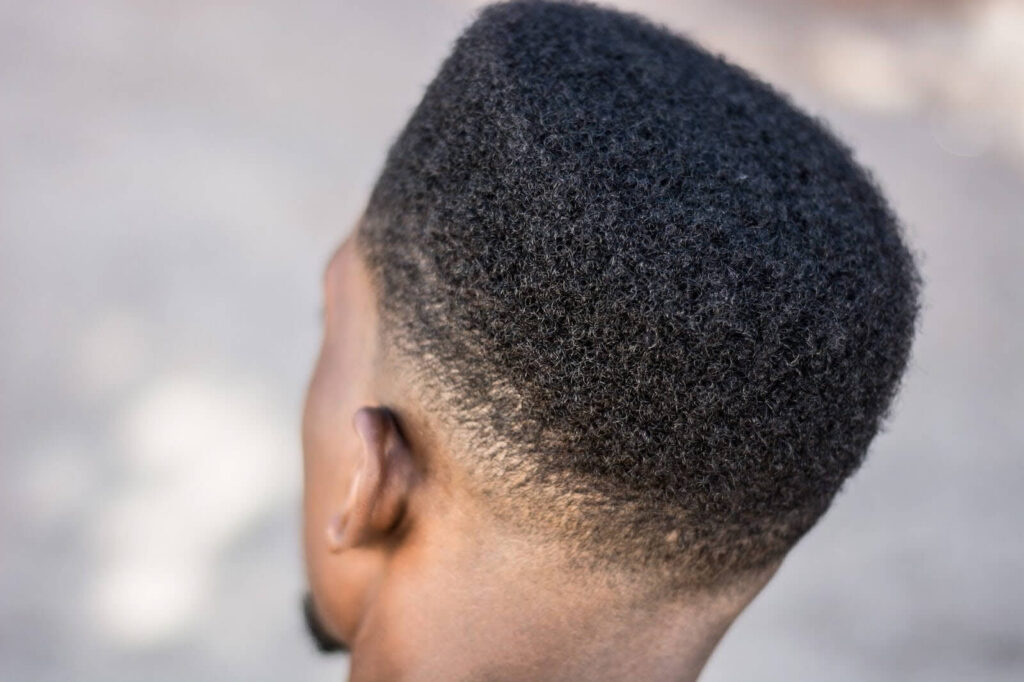If you have thinning hair or a growing bald spot on your crown, a hair transplant is the most effective way to reverse time and get back to a fuller head of hair. It is a permanent solution vastly superior to any temporary hair loss remedies. At Nashville Hair Doctor in our Nashville, Memphis, and Louisville clinics, as well as treating out-of-town patients from across the country, we hear patients tell us time and again how they wish they’d invested in a hair transplant sooner.
And yet you are probably not dropping everything and signing up for the next appointment at your local hair clinic. Why do you hesitate?
You might worry about the pain. But that fear is misplaced. Hair transplants are minimally-invasive cosmetic procedures, meaning you can have them while awake, and a bit of local anesthesia is enough to make you feel comfortable throughout. All you need is an entire day for the – often quite lengthy – business of extracting hair follicles from the back of your head and inserting them into the front and top (or even your face for a beard transplant).
If the hair transplant itself is nothing to be afraid of, what is holding you back?
We think we know the answer. Most patients are worried about their recovery from a hair transplant. Not in a medical sense, mind you. Recovering from a NeoGraft hair transplant is neither painful nor does it take long. Most Hair Doctor patients are physically able to return to work, or play, within 1-2 days of their procedure.
The reason you might think twice about having a hair transplant is not knowing how to conceal it while your hair grows back in.
Here, then, are the Hair Doctor’s tips for how to conceal your hair transplant:
Tips to Conceal Your Hair Transplant
Time Your Haircut
If you don’t already have a shorter style of hair, you may benefit from transitioning to one a few weeks before your transplant. The classic fade or crew cut is ideal. Getting your hair cut in this style will allow time for people you see regularly to stare, make comments, and adjust to your new look. That way they won’t be doing the staring and commenting when you come back from your hair transplant, meaning you will be under less scrutiny and your remaining appearance while healing will be far less noticeable.


Wear Concealers
The most popular hair loss concealers are Toppik and DermMatch. These products improve the appearance of density and can conceal hair loss.
Toppik is a magnetically charged hair fiber that attaches to thinning hair follicles, causing the hair follicle to appear longer and fuller. DermMatch is a hard-packed powder formula that matches the color of the individual’s hair and scalp. This provides an illusion of fuller, denser hair, because we see the scalp through hair. If we don’t see scalp, we see the hair as thick.
DermMatch even works well with short, buzzed hair, so even individuals who buzz their head for their procedure can use the product. It is also great for concealing the pink pigmentation in the areas of implantation after your procedure while healing.
Start Wearing Hats
The old wives’ tale about hats causing hair loss is not true and has no real science behind it. In fact, most hair transplant surgeons recommend that patients wear hats and use sun block when exposing themselves to powerful ultraviolet (UV) rays for the first four months. Today, wearing hats is acceptable and even considered stylish when paired with the right clothing.
With that said, if an individual never wears hats and all of a sudden starts wearing a hat every day, this may draw unnecessary attention and prompt some people to start asking questions. Therefore, if you are planning on wearing a hat after receiving a hair transplant, you should start wearing a hat about a month before the procedure. Just like with the aforementioned new hair style, this will allow those around you to get accustomed to seeing you with a hat.
If you do wear a hat after your transplant, just make sure it’s a relatively loose-fitting one, and wait 3 days before you wear it. For more information read our article on hair transplant recovery tips.
Plan a Vacation
Some men head to the beach or their favorite travel destination for a week while they recover with family. 7-10 days is widely considered the time period needed for the donor area to grow back in and the punctures from implantation to scab over and fall off.
Perhaps you can have your procedure line up with your annual family vacation. Or perhaps you use the opportunity to hook up with an old friend for a guy’s trip. Or better yet, perhaps you can talk a close guy friend into having a hair transplant together with you so that you can share the journey!
Now or Later?
A great trick behind hiding a hair transplant is to have the restoration done before it becomes noticeable to your friends and family.
You might think, “but I want to have the biggest bang for the buck!” If you’re considering letting the loss worsen a little further before taking the step to schedule your restoration, maybe think again. If you’re still in the lane of being able to use product and styling technique to disguise the loss to where you’re comfortable, it may be the perfect time for you before those efforts no longer work.
Remember, hair transplants are permanent, in that the transplanted hair does not fall out. This has to do with the nature of the hair used for transplantation. It is resistant to hair loss.
Use Smart Scheduling
If you work a typical Monday-Friday, in-office job, we recommend having your procedure on a Friday and then taking the following week off work to provide ample time for you to heal. That way you can utilize both weekends in conjunction with the full week off.
And remember, life during a pandemic has upended a lot of our thinking in this regard. Taking 2 weeks off to work from home has become totally acceptable, when the doing so might have raised eyebrows before 2020. Trevor Noah has made hoodies his signature attire for the Daily Show. Maybe you can make a succession of baseball hats yours!
We hope these tips have helped you get a better idea of what your recovery from a hair transplant looks like, and how long-term planning ahead of time might help to make it easier. If you’re not sure if a hair transplant is for you, see if you qualify for one by answering a few questions and uploading your picture for a same-day quote. And make sure to evaluate your financing options to check your credit score and learn about payment plans.

